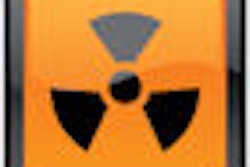Radiation therapy treatments come with a price for prostate cancer patients: toxicities that can cause unpleasant urinary and rectal side effects. Tiny electromagnetic transponders implanted to enable real-time tracking during intensity-modulated radiation therapy (IMRT) may provide some relief.
That's according to U.S. researchers, who analyzed quality-of-life outcomes for prostate cancer patients who received IMRT delivered to smaller planning target volumes (PTV) through the use of real-time tumor tracking. The group compared the outcomes to those of patients who received conventional IMRT or highly conformal external-beam therapy without tracking.
The study results show that the patients who had reduced margins and tumor tracking experienced less radiotherapy-related morbidity two months after treatment. The research was published online February 15 in Urology.
Three 21st Century Oncology centers, located in Cape Coral, FL, Santa Monica, CA, and Scottsdale, AZ, enrolled 64 prostate cancer patients in the study. The men underwent implantation of Beacon transponders (Calypso Medical Technologies, Seattle) in the prostate with transrectal ultrasound guidance. Three transponders were implanted per prostate -- one each in the left and right base, and one in the apex.
The patients were treated with IMRT to a normal dose of 81 Gy in 1.8-Gy fractions to the prostate and proximal seminal vesicles between September 2008 and June 2009. The PTV margins were uniform 3 mm with 95% or greater PTV coverage by the prescription dose.
The wireless implanted transponders generate a frequency of 10 Hz, which allows for 3D positioning of the transponders and the target isocenter to be tracked, providing continuous, real-time localization and monitoring of the prostate. A noncontact AC electromagnetic array locates the position of the transponders with submillimeter accuracy, and then registers the target isocenter to the linear accelerator isocenter. Audio cues notify the radiation therapist when the target is outside user-definable tracking limits.
Prior to beginning radiation therapy and two months following the completion of treatment, the patients were given an Expanded Prostate Cancer Index Composite (EPIC) questionnaire designed to assess urinary irritation, obstruction, and incontinence; bowel or rectal function problems; and sexual function. Fifty-seven of the patients completed both questionnaires.
The questionnaire responses were compared with those of 153 patients selected to represent a mix of similar characteristics who participated in a quality-of-life outcomes study headed by principal investigator Dr. Howard Sandler, then a radiation oncologist with the University of Michigan School of Medicine in Ann Arbor. Results of the outcomes study, which comprised 1,201 patients (including the 153 selected) treated at nine academic cancer centers between March 2003 and February 2006, were previously published in the New England Journal of Medicine (March 20, 2008, Vol. 358, pp. 1250-1261).
With the exception of overall cancer severity, the two groups were comparable, with similar age and ethnicity mix, median prostate-specific antigen (PSA) levels, Gleason scores on biopsy, and clinical states. The patients in the real-time tracking group had more high-risk (13% versus 3%) and medium-risk (64% versus 58%) cancer severity levels as compared to low-risk levels (23% versus 40%).
The research team, led by principal investigator Dr. Constantine Mantz, a radiation oncologist at the Cape Coral treatment center, reported that patients who had real-time tumor tracking and reduced PTV margins had no clinically relevant treatment-related worsening of symptoms in seven of eight categories, whereas patients in the comparison group experienced clinically significant declines in categories of urinary irritation/obstruction, urinary incontinence, and bowel/rectal functions. The first group experienced meaningful decline only in urinary function.
For the first group, the percentage of patients with urinary urgency, bloody stools, rectal pain, and overall bowel problems actually decreased slightly after treatment, whereas the percentage of patients treated conventionally who reported these same problems increased after treatment.
Sandler, now chair of radiation oncology at the Samuel Oschin Comprehensive Cancer Institute of Cedars-Sinai Medical Center in Los Angeles, wrote that the findings of the 21st Century Oncology patients conformed with published modeling study estimates that by reducing the PTV margin from 7 mm to 3 mm, rectal toxicity should decrease by 12%. He said that he used a 10-mm treatment margin for his own conventionally treated patients, compared with a 3-mm treatment margin for his patients having real-time tumor tracking.
The margin reduction benefit was greatest for rectal adverse effects, the researchers noted, because narrower margins directly reduce the volume of irradiated rectum. They attributed lack of change in sexual activity and interest by the real-time tumor tracking group to the absence of bowel and urinary toxicity. By comparison, the other group experienced a 12% decline in sexual activity two months after treatment.
The research team had intended to enroll up to 300 patients in the study. However, the results of the 64 patients were so uniform that the study was closed early so that the findings could be reported sooner.
By Cynthia E. Keen
AuntMinnie.com staff writer
March 26, 2010
Related Reading
Higher RT dose improves outcomes for prostate cancer patients, December 14, 2009
Calypso aligns with Varian Medical, July 24, 2009
Few major complications in 30 days after prostate radiotherapy, February 13, 2009
Calypso, Siemens join forces, September 22, 2008
GI toxicity prolonged after prostate cancer irradiation, July 27, 2006
Copyright © 2010 AuntMinnie.com



















